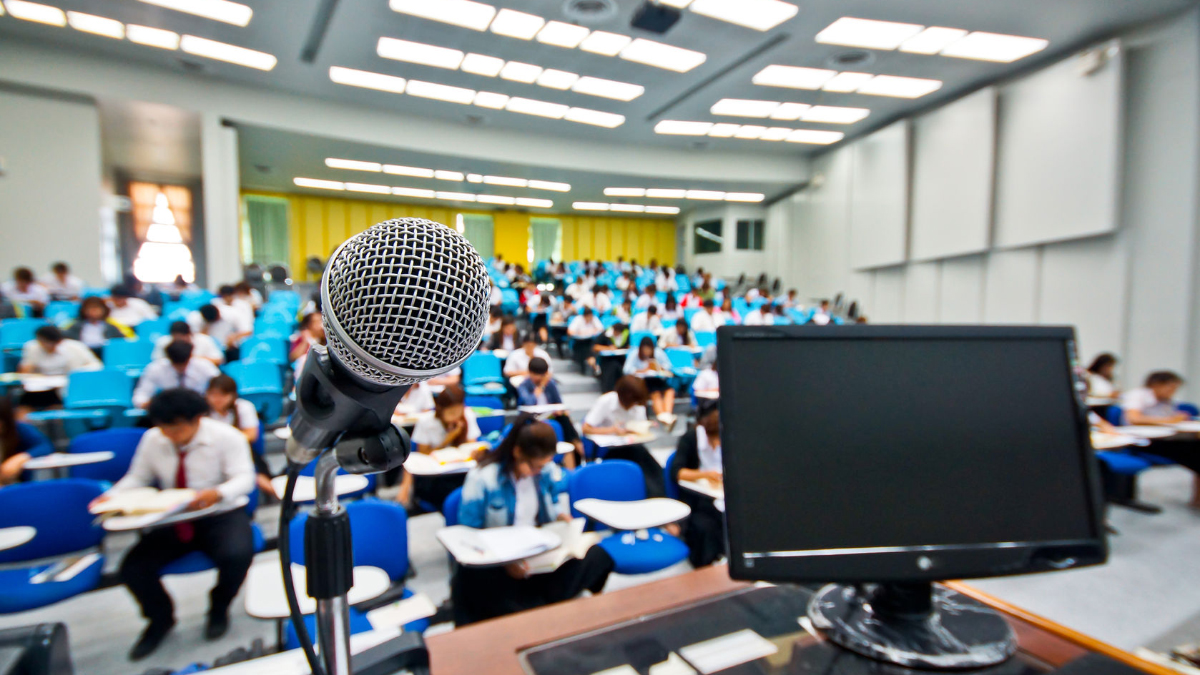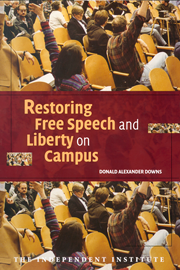Alarm over the state of free speech and academic freedom on American campuses is nothing new under the collegiate sun. But it has reached fever pitch in the past few years.
The unease is justified, given the notorious disruptions and dis-invitations of legitimate and worthy speakers; the censorious echo chambers of academic disciplines intolerant of dissent; and the often-unprincipled use of speech-smothering policies such as trigger warnings, safe-spaces, bias-reporting, and mandatory sensitivity training.
More and more faculty members across the political spectrum who had remained quiet for years now feel compelled to speak out because they believe things have spun out of control.
This said, the actual extent of the problem has always remained a question. Many schools and departments have avoided confrontations, and the media is not interested in “success stories” that no doubt take place. After American Enterprise Institute political scientist Charles Murray and his faculty host were physically attacked at Middlebury College last March in a disruption heard around the academic world, Murray was able to speak at Notre Dame, Harvard, and Columbia without incident.
Given the multiplicity and complexity of higher education, empirical estimates of harm will remain at least somewhat inexact. But a growing number of surveys have helped us approach a more accurate picture. It reveals genuine cause for concern, but also reasons for hope.
On the obvious negative side, we have beheld a growing number of anecdotal accounts of student disruptions and faculty intolerance. Some of the most serious disruptions in 2017 occurred at U.C. Berkeley, Evergreen State, Middlebury, and Claremont McKenna. On the faculty front, a massive rebellion of scholars in Third World studies recently compelled an academic journal, Third World Quarterly, to retract an article that politely called for rethinking the pros and cons of colonialism. Also, faculty at the eminent University of Pennsylvania Law School publicly denounced an accomplished colleague for the sin of extolling bourgeois values on the op-ed page of the Philadelphia Inquirer.
Recent surveys of student attitudes also provide cause for concern. To pick one example, a study published last month by the Brookings Institution found that half of students polled believe it is okay to shout down a speaker whom one finds offensive, with almost 20 percent agreeing that using violence to prevent offensive speech is acceptable. Surveys conducted by the Cato Institute and the Foundation for Individual Rights in Education report similar findings, mixed with more nuance.
Other studies leave more room for ambiguity and hope. Many of the new surveys do not compare college students with society writ large. But a recent article in The Economist, cites evidence that young people who have attended college remain more tolerant of controversial speakers than the general public—a finding consistent with a long line of social science research that correlates education with increased tolerance of unwanted speech.
In addition, a Gallup survey of 3,000 students for the Knight Foundation and Newseum found that 78 percent favor schools where “offensive and biased” speech is allowed. Even at Yale, where an infamous protest against free speech and pro–free speech faculty erupted last fall, 72 percent of students opposed speech codes, with only 16 percent favoring them.
So, what gives? The Economist supplies an explanation that makes sense, given my own experience as a free speech scholar and activist: Typically, fewer than 20 percent of students are anti-free speech, but the anti-speech activists are more aggressive than their tolerant counterparts and better able to influence school administrators. For their part, the administrators who appease them in the name of “diversity” lose sight of higher education’s primary duty: to pursue truth with intellectual competence, honesty, and freedom.
Higher education can turn things around if it finds the resolve and fortitude. Will it?









